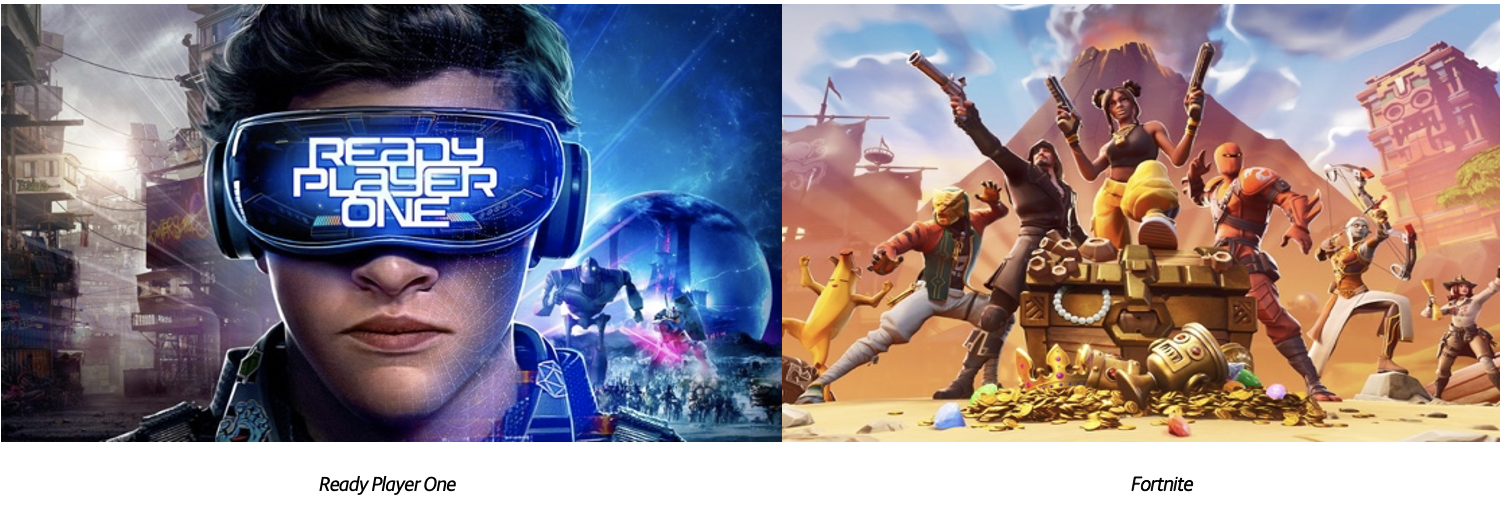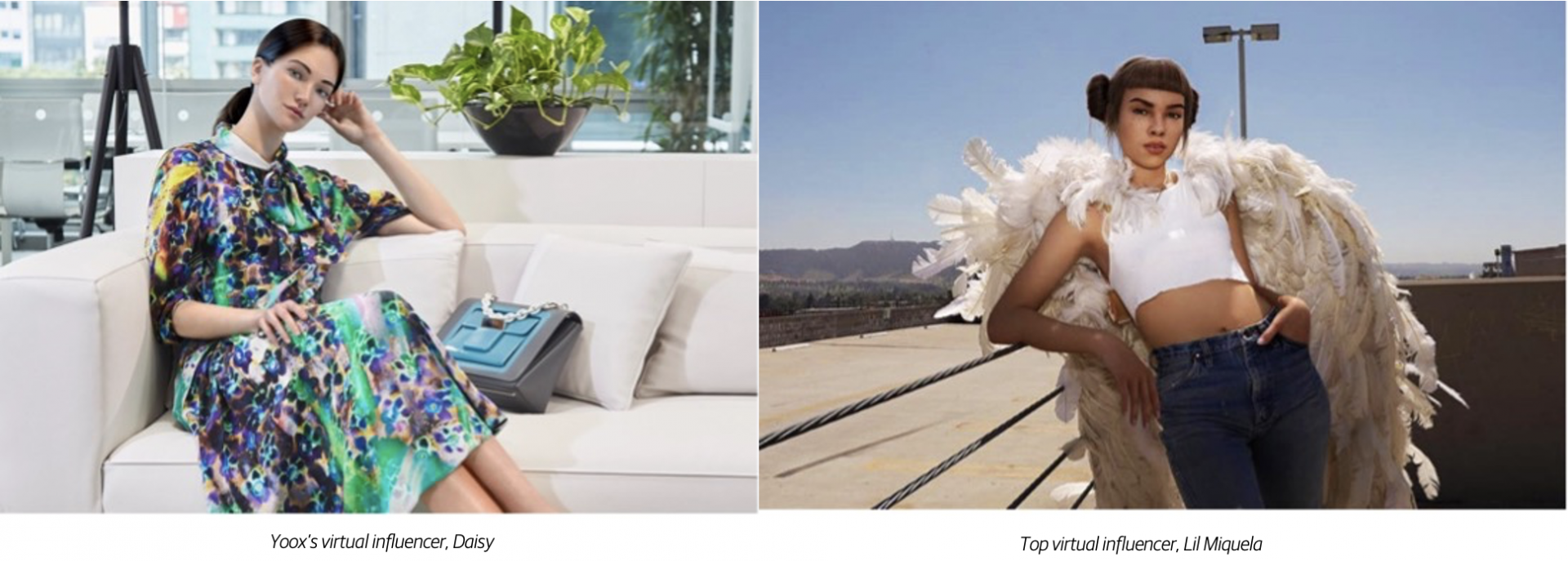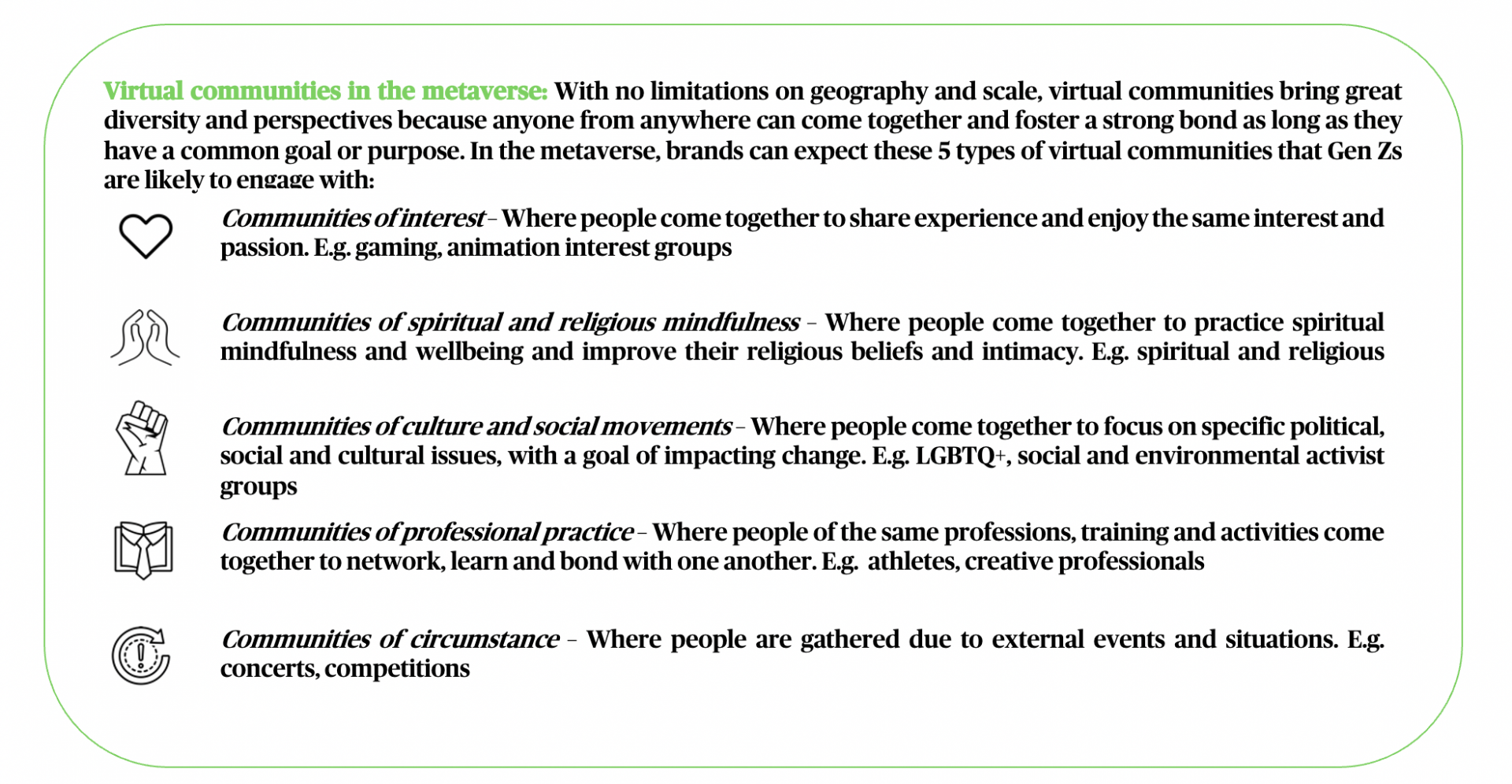

A new virtual future.
An evolution of the internet – the metaverse is a continuum of immersive, realistic digital experiences that are made available through integrated virtual environments. The concept of a metaverse is not new; some forms of the metaverse have already been introduced through video games such as Fortnite, where gamers are able to immerse themselves simultaneously and socialize and engage with one another in virtual experiences. This concept was also explored in a fiction novel-turned-movie, Ready Player One, which depicts real-life individuals immersing themselves in a virtual world through VR headsets, assuming new roles to interact with others and participate in extensive multiplayer online games.

Yet the latest developments on the metaverse present a much greater potential in terms of scale – be it the number of virtual worlds, users, real-time experiences, expanding beyond basic social and gaming experiences and data & synchronization. Driven by cutting-edge technologies such as virtual reality (VR), augmented reality (AR), artificial intelligence (AI), the metaverse can stretch beyond the integration and application of diverse software platforms, and hardware applications (cloud and blockchain technology) that power it. It can provide a lot more immersive and holistic experiences, touching commerce, education, trade, other forms of entertainment. Gen Z cares more about metaverse.
As a truly digitally native generation, Gen Zs are engrossed in a digital culture more than any other prior generations. Especially when it comes to usage of different technologies and the immersion and engagement in virtual spaces, Gen Zs are likely to be the fast learners, early adopters and advocators for the products and services in the metaverse, as many of them had already well-acquainted with them through video gaming and online commerce.
Globally, around 81% of Gen Zs are playing games on their smartphones, gaming consoles and computers, spending an average of at least 7 hours on gaming per week. When it comes to gaming, the industry has long evolved with innovations that generate highly realistic simulations which allow Gen Zs to interact with other players in a seamless, realistic way, within a more immersive environment. In games that explore an entirely new virtual world such as Fortnite, Roblox or Minecraft, the industry also sees Gen Zs transform their gaming experience from pure gameplay to community-based social cohort and sub-culture. Therefore, Gen Zs are in essence utilizing these gaming virtual platforms to express their identities, interests, outreach new friends, and explore and consume new media while they continue to immerse in the virtual world.
The commercial opportunities in these virtual spaces have also opened up as Gen Zs usually obtain and sell in-app purchase items that will help them improve their skills to master the game. These items stretch beyond simple weapons and life points, they include avatar features and clothing, and even in-game currencies and gems. This signifies that Gen Zs are investing real-life money to better their virtual characters, life and experiences, and some even profiting from trading and selling virtual items. To expand this concept to the metaverse, Gen Zs are likely to fuel virtual commerce as they look to build and improve their virtual lives within the space.

Ever since Facebook has rebranded to Meta to solidify its position on the metaverse, other global brands are now joining the hype and betting big on the metaverse. Luxury fashion house Gucci has already debuted in the metaverse with its digital art installations that enabled users to explore its new collection, try and buy its digital products; luxury sportscar Ferrari launched its new supercar in Fortnite for players to see and test out the new car virtually almost a year before others can experience it physically, and others like sportswear brand Adidas also announced strategic partnerships that will excite virtual inhabitants in the near future.

To Gen Zs, the metaverse is a not foreign concept – it is simply a newer extension of their existing virtual platforms and identities that they are already comfortable maneuvering. It is another avenue where they can continue to build brand new or refined identities, meet and socialize with new friends online, discover the latest, trendiest brands, invest and build new spaces, earn some profits, buy and sell virtual goods, and enjoy leisure (and competitive) gaming.
It is only time before metaverse becomes mainstream, and companies are banking on Gen Zs to be the young force that drives adoption by the masses.

What’s in a name? A name acts as the first impression of a brand. A name triggers association through our own experiences and the benefit and value the product offers us. Facebook’s renaming of its brand as Meta speaks for its position and value the company wish to create for consumers. Currently, the majority of the brands that are present and made invest in the metaverse are large, renown, established brands, and how their naming is most telling of that they have to offer.
Gucci’s immersive commerce experience in the metaverse is named Gucci Garden, where visitors can explore the virtual gallery interactively – their digital avatars in Roblox can transform into mannequins that absorbing elements of exhibitions and turning themselves into unique digital artworks. Using the name ‘Garden’, instead of ‘exhibition’ or ‘gallery’, show the brand resonance through alliteration of G for Gucci, it also refer to the exploratory, sensorial, immersive and interactive quality of a garden — amplifying the free expressive spirit and the democratized accessibility of metaverse.
Electric/City by Charli Cohen & Selfridge is created to celebrate 25th anniversary of Pokémon, allows users to try on latest designer clothing with AR and experience the cyberpunk, electric alternate universe of city of London. Mesh For Teams by Microsoft creates a mixed reality that meshes 2D screen of physical world with a 3D avatar, and users can take their avatars to different virtual meeting and presentation room to make online meetings more personal, engaging and fun, further emphasize on the increasing blurring, meshing boundaries between physical and virtual reality.
For lesser-known or newer brands that are birthed in the metaverse and tailor to Gen Zs, in addition to the essential immersive experience and social value of their products and services, their names should resonate and strengthen the brand’s identity. More importantly, they should also reflect the unique angle that highlight the product value and social capital that speak to Gen Zs.
1. Delight with experiential fun and discovery
As the metaverse becomes a new important touchpoint, it is time for brands to truly bring creativity to the fore. Take the opportunity to explore new ways of showrooming for instance, brands can leverage Gen Zs’ preference for browse and research by creating a virtual showroom that allows audiences to discover interesting, visual expressions and information on the brand, and even allow trial of products and services virtually. Brands can also host extensive interactive live event that comprises various interactive elements such as live gigs and shows, multiplayer games and competitions, community networking spaces etc. that allows an immersive experience for consumers to connect and engage with the brand.

2. Bring products and services in virtual – and physical (real-life) form
To the Gen Zs, the metaverse is a place where there are endless possibilities for them to express themselves. They can be anyone or anything they want, they can interact with others of diverse demographics and geographies, they can immerse themselves in different online activities freely, so they are essentially empowered to curate their virtual character, personality and life in ways that may be impossible in the real world. The ability to purchase virtual items to improve their digital characters and experiences will definitely resonate high appeal with Gen Zs in the space.
However, as much as these Gen Z consumers are motivated to live their digital lives more fully, this does not mean that they are neglecting their real-world aspirations. Brands should take the metaverse as a mean to curate a unique omnichannel experience by seamlessly connecting digital and physical realities with virtual and real-life offers.
3. Leverage virtual influencers
Virtual influencers have been around for some time now, and many have garnered a mass following on social platforms for their realistic characteristics, features, and relatable, friendly personalities. One of the earliest, and most influential virtual influencer, Lil Miquela has at least 3 million followers on Instagram alone, and was sought after by big brands Calvin Klein and Prada for product endorsements. Just by looking at engagement figures, virtual influencers are highly effective, sometimes even more so than real-life influencers, because these online personalities are able to build a strong connection especially to the digitally native Gen Zs by incorporating characteristics that are ideal, or values that resonate well with this group of audiences.
If virtual influencers are a thing, think meta-influencers. Brands can either engage existing virtual influencers or create an entirely new avatar to solely build strong brand ambassadorship and following, and then establish their endorsements in virtual worlds and spaces. Fashion commerce Yoox created its very own avatar model, Daisy, to become the personification of the brand. Having a virtual spokesperson allows the brand to have greater direct engagement and influence over its consumers, and even attracts the attention of curious platform users who may be on their way to become consumer converts.

Go where the audiences are – understanding that Gen Zs are spending a good amount of time online socializing in virtual communities, brands can leverage this opportunity to engage with audiences through promotions and events in the space. In addition to real-life outdoor advertising, brands can look at using virtual billboards and pop-up booths, or even engage a digital promoter to mingle and interact with audiences within their virtual communities. While doing so, ensure that the brand consciously adapts its tone of voice and message to the intended audience groups, keeping in mind the possible sub-cultures present in these communities.

5. Stretch the metaverse for internal engagement
With the oldest of Gen Zs being in their early 20’s, it is only time before this group constitutes a significant share of the global workforce. Brands can start to re-look at how they engage internal employees by exploring a new way of hybrid work, especially when the pandemic has accelerated digital adoption for the office. By tapping onto the metaverse, brands can offer virtual office spaces for employees to interact, work together, have meetings and discussions with their digital characters, or engage employees through virtual sharing coffee sessions, team building games and training workshops. The metaverse essentially offers greater immersion and interaction opportunities for brands and employees compared to simple video conferencing tools that everyone is somewhat used to.
6. Build the essence of brand identity through naming
Gen Zs have a higher demand when it comes to their identity expression in the physical reality as well as in the virtual world. A brand’s name and its association can be potentially used as a badge for them to trade in the metaverse, as a mean to express their social status and aspiration. With a strong brand name that reflect brand’s value and Gen Zs’ virtual identity expression in the metaverse, the brand can become more memorable and salient in Gen Z’s digital lives.
As digital natives, it is natural for brands to see Gen Zs as early adopters of the metaverse. This younger group of audiences can be extremely influential in convincing other generations to come onboard the metaverse ship. Gen Zs remain an important target audience in this space, and for brands to succeed in attracting and engaging individuals in the metaverse, it is essential for them to take a closer look and tailor to the diverse needs, behaviors and preferences of these young consumers.
Sources:
Newzoo, Generations Report on Gaming, 2021
Think with Google, How is Gen Z Changing the Future of Gaming and E-sports, 2020
Microsoft, Great Expectations, Making Hybrid Work, Work, 2022
Forbes, The Future Of Brand Opportunities In The Metaverse, 2022
A Labbrand Group Company © 2005-2024 Labbrand All rights reserved
沪ICP备17001253号-3To improve your experience, we use cookies to provide social media features, offer you content that targets your particular interests, and analyse the performance of our advertising campaigns. By clicking on “Accept” you consent to all cookies. You also have the option to click “Reject” to limit the use of certain types of cookies. Please be aware that rejecting cookies may affect your website browsing experience and limit the use of some personalised features.